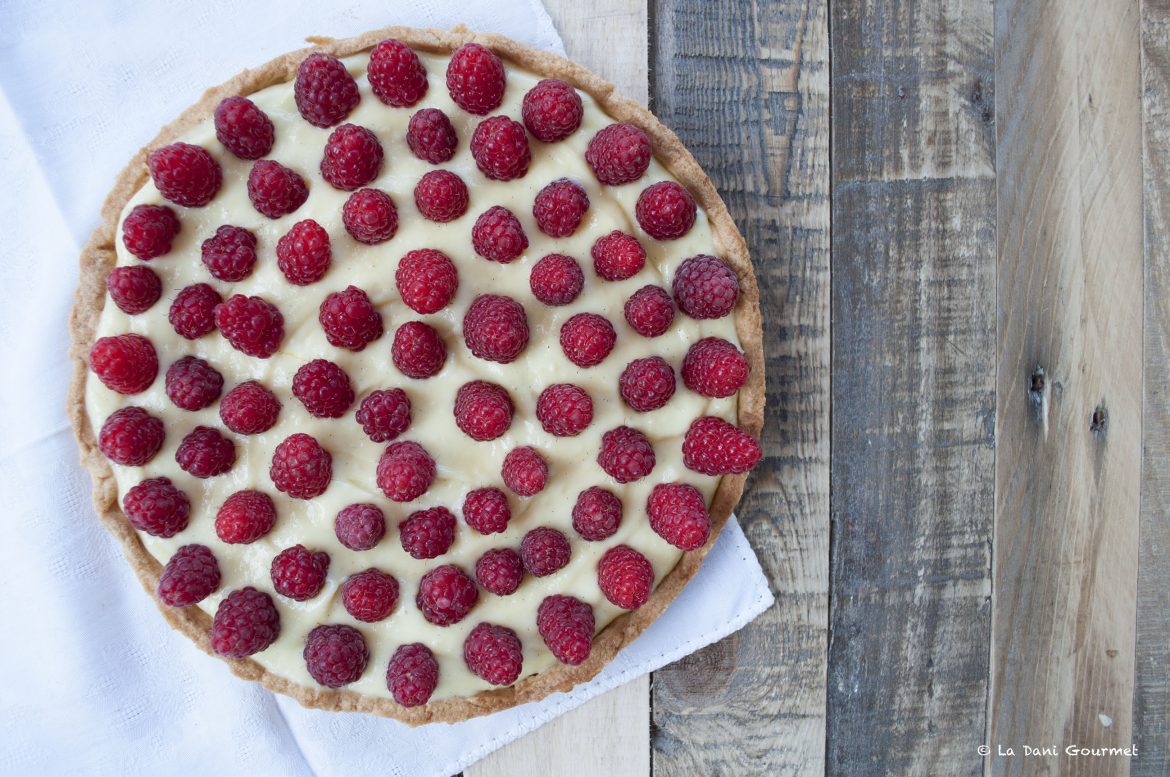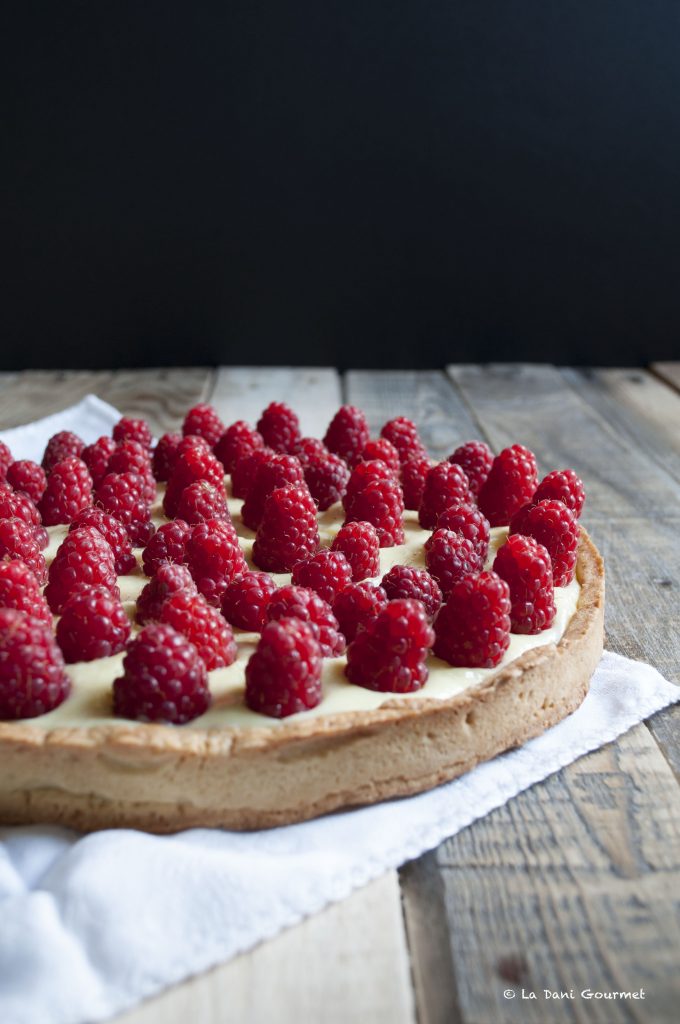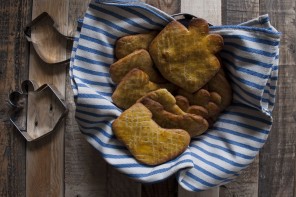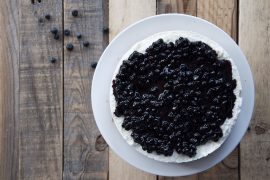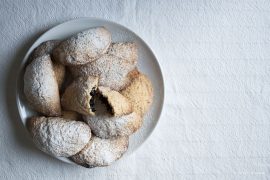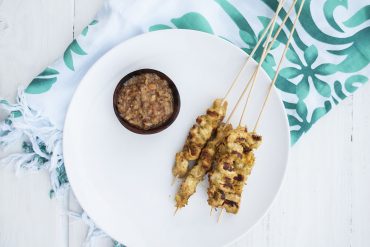I love cooking since it’s one of those activities where creativity and science coexist.
I’ve already quoted Dario Bressanini and his blog La scienza in cucina, but I haven’t told anything about his book La Scienza della Pasticceria (The Science of Patisserie).
Patisserie is certainly the cooking area where science shows up more evidently. The reasons why sponge cake rises in the oven (without any baking) or custard thickens on the heat are connected to specific chemical and physical processes.
For example, let’s try to analyze egg yolk, the main ingredient of the custard I will prepare in this recipe.
Egg yolk consists of water, proteins and fat and one of its main function is to gelify; raising the temperature, indeed, its proteins start to coagulate.
The egg yolk should start coagulating at 65°C and at 70°C would be completely hard. The addition of sugar, starch (such as flour or corn starch) and the presence of water and fat in milk raise the temperature of coagulation, permitting to bring the custard to the boil.
This high temperature is needed to deactivate an enzyme of the egg yolk, that, otherwise, would liquify the custard after cooling.
To put into practice this notions, I decided to prepare a vanilla custard, that will be the filling of a shortcrust pastry, flavoured with hazelnuts and lemon zests.
The recipe for the shortcrust is from Gianluca Fusto, a Pastry chef and author of many books, and it’s included in the last Jamie Magazine Italian issue (May 2016).
Shortcrust and custard are the perfect base for every seasonal fruit. I chose some raspberries, picked directly in my garden. How is it satisfying to harvest the fruits you cultivated and took care of?
[spoiler, in the recipe I added another chemical detail in custard making]
HAZELNUT SHORTCRUST, VANILLA CUSTARD AND RASPBERRIES
for a pie baking tin of about 24 cm
for the shortcrust:
100 g butter, at room temperature
85 g icing sugar
30 g hazelnut flour (I ground hazelnuts of Piemonte IGT)
1 small egg
220 g of flour
lemon zest
a pinch of salt
for the custard:
500 ml of milk
120 g of egg yolks (about 6)
1/2 vanilla bean
120 g of caster sugar
20 g of rice flour
20 g corn starch
for the finishing:
200 g of raspberries
1. First things first: the shortcrust.
In the stand mixer, or in a bowl with a wooden spoon, combine soften butter together with icing sugar and then add hazelnut flour and the egg.
Then mix in flour, lemon zest and salt, until you get a nice mixture.
Place the mixture between two sheets of baking paper, at 2 cm thick. Let it rest in the fridge for about 3-4 hours.
2. Now let’s prepare the custard.
Heat up the milk.
In a bowl add the egg yolks, the seeds of half a vanilla bean; then add sugar and combine well. When you add sugar to egg yolks, it’s important to mix immediately, otherwise sugar will attract the water included in yolks, and unpleasant lumps will form.
Add rice flour and corn starch and mix well.
As soon as milk simmers, remove it from the heat and add it to the yolks mixture.
Put the custard over a low heat and keep on stirring.
Remove from the heat as soon as it simmers and place it in a wide bowl, so it cools down more quickly, and cover with plastic wrap, so a skin won’t form on the surface.
Let it rest in the fridge for about 2 hours.
3. Let’s bake the shortcrust.
Preheat the oven at 175°C.
Grease and flour a pie baking tin.
Roll the pastry and cover the tin. Make some holes with a fork on the base, cover with baking paper and add chickpeas. Place in the freezer for about 5 minutes.
Bake for 20 minutes, and then remove the baking paper with the chickpeas; continue baking until shortcrust is nice and gold.
Let it cool.
4. Let’s combine the elements.
Pour the vanilla custard into the cooked pie and cover with raspberries.
Put in the fridge for at least a couple of hours before serving.
Enjoy!
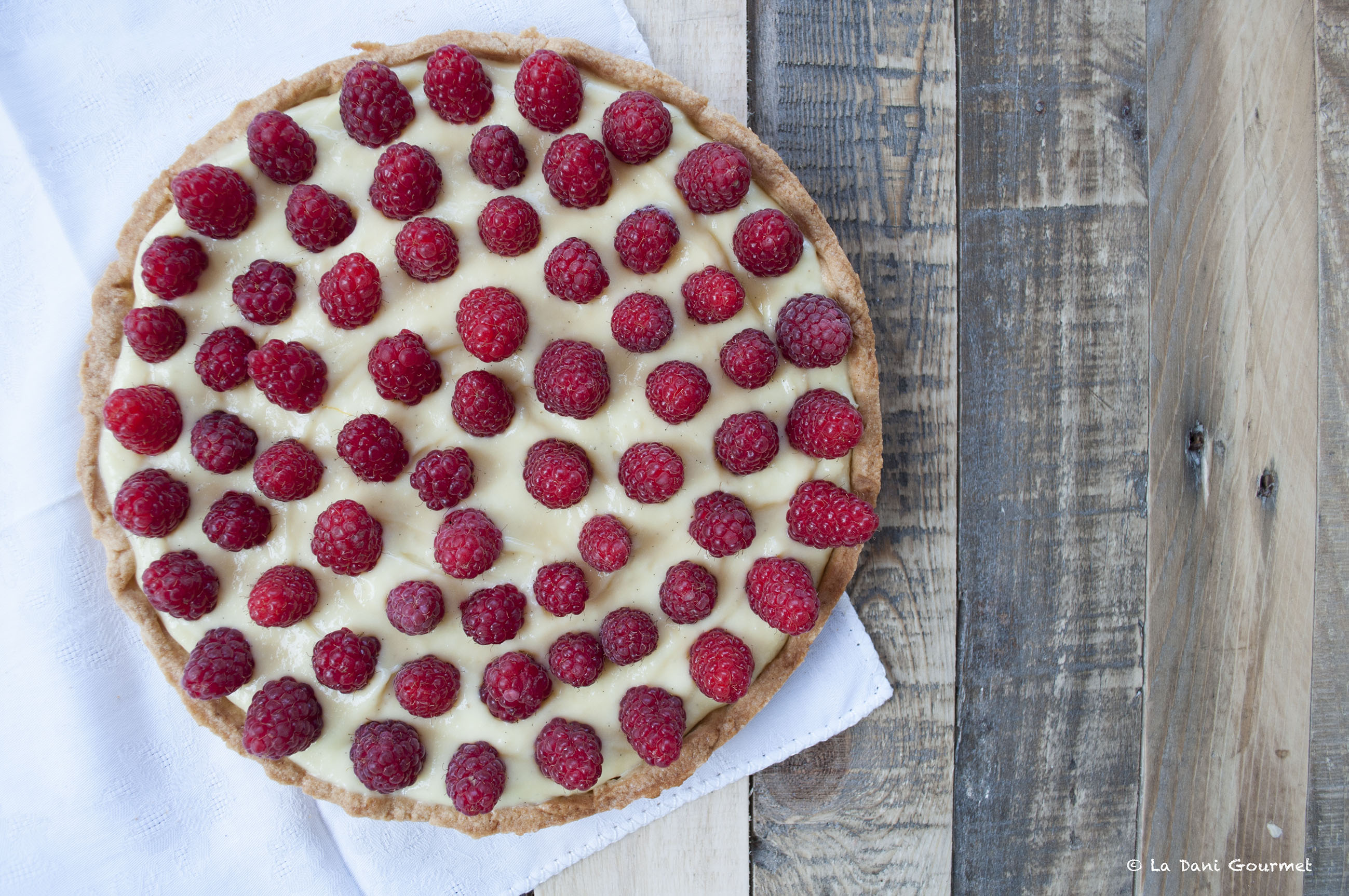




 Based on 0 Review(s)
Based on 0 Review(s)This post is also available in: Italian

